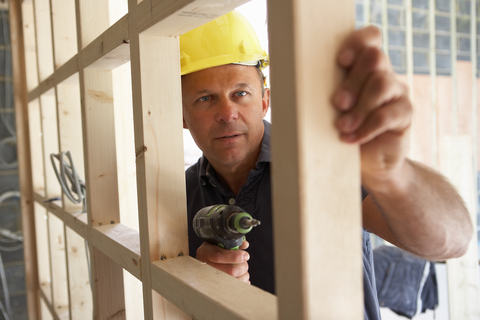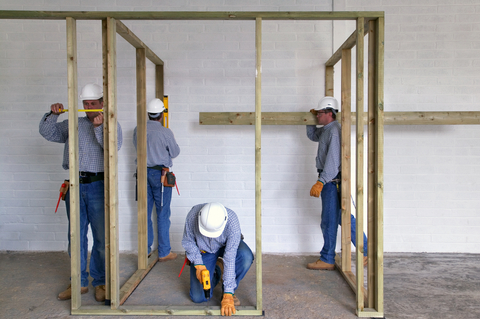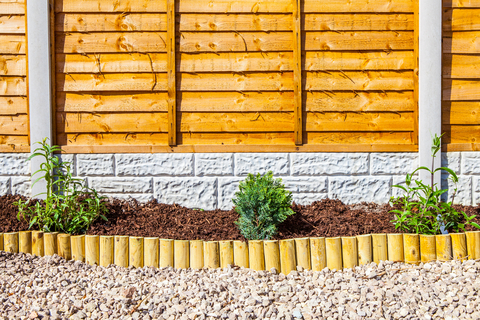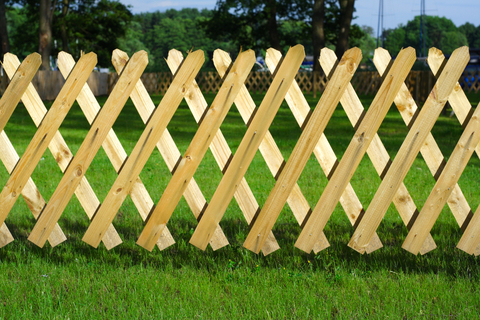What is timber used for in construction?
Published on 11 March 2025

Timber has been a fundamental building material for centuries, valued for its versatility, sustainability, and natural properties. It is widely used across the construction industry for applications ranging from structural framing to decorative finishes. In the UK, timber is regulated by strict standards to ensure quality, safety, and sustainability. This blog explores timber’s role in construction, its advantages, types, and procurement policies while incorporating essential keywords relevant to the industry.

Uses of Timber in Construction
Timber is used extensively in construction due to its strength, cost-effectiveness, and ease of handling. Below are the key applications of timber for building construction:
1. Timber Framing
Timber framing is one of the most common uses of wood in construction. It forms the skeletal structure of buildings, supporting roofs, walls, and floors. Timber framing is highly adaptable, allowing architects to create unique designs while ensuring structural integrity. C24 timber, commonly used in UK construction, provides superior strength and durability.
2. Roof Trusses
Roof trusses made from timber are widely used due to their load-bearing capacity and prefabrication advantages. These trusses can be manufactured off-site, ensuring high precision and reducing on-site construction time. Douglas fir, known for its high strength-to-weight ratio, is an excellent choice for roof trusses.
3. Flooring
Timber flooring is preferred for its aesthetic appeal, durability, and thermal insulation properties. Hardwoods such as oak and maple are commonly used for high-quality flooring applications. Timber’s natural ability to insulate helps improve energy efficiency in buildings.
4. Stud Walls
Stud walls, essential in residential and commercial buildings, are typically constructed using kiln-dried softwood such as spruce or pine. These woods are lightweight and easy to handle, making them ideal for internal partitioning.
5. External Applications
Timber is widely used for exterior applications such as cladding, decking, and fencing. Western red cedar is a preferred choice due to its natural resistance to decay and insects. Pressure-treated timber is recommended for outdoor applications to enhance durability against weathering.
Why is Timber Good for Construction?
Timber offers numerous benefits, making it a preferred material in construction; hence the entire roadmap on the versatile use of timber in construction:
1. Strength and Durability
Timber has a high strength-to-weight ratio, making it suitable for load-bearing structures. Certain species, such as Douglas fir and larch, provide exceptional durability and resistance to environmental factors.
2. Environmental Benefits
As a renewable resource, timber is an environmentally friendly choice when sourced from managed forests. Timber buildings contribute to carbon dioxide reduction as wood naturally absorbs CO₂ during its growth cycle. Compared to steel and concrete, timber requires significantly less energy-intensive processing, further reducing carbon emissions.
3. Thermal Insulation
Timber is a natural insulator, helping to maintain indoor temperatures and reduce energy consumption. Its ability to minimise thermal bridging enhances energy efficiency, making it an excellent choice for sustainable construction.
4. Speed of Construction
Timber construction can reduce build times by up to 25% compared to traditional masonry methods. The use of prefabricated components further enhances efficiency, reducing on-site labour requirements and costs.
5. Flexibility and Adaptability
Timber is a versatile material suitable for various construction methods, including modular and off-site construction. Its adaptability allows architects and engineers to explore innovative designs while maintaining structural integrity in every season.
Types of Timber for Construction
Different types of timber are suited for specific construction applications. Below is an overview of common types of timber for construction in the UK:
| Type of Wood | Characteristics | Common Uses |
| Pine | Light colour, straight grain, affordable | Stud walls, furniture |
| Spruce | Strong, stiff, durable | Framing, musical instruments |
| Douglas Fir | High strength-to-weight ratio | Structural beams |
| Western Red Cedar | Natural resistance to decay | Cladding, decking |
| Oak | Durable with distinctive grain patterns | Flooring, cabinetry |
| Larch | Weather-resistant | Exterior applications |
Softwoods like spruce and pine are commonly used for structural purposes due to their affordability and ease of handling. Hardwoods such as oak are preferred for decorative applications where durability is essential.
Standard Timber Sizes for Construction in the UK
In the UK, timber sizes are regulated by standards such as BS EN 14081 to ensure consistency and quality. Below are common timber sizes for construction:
Nominal Section Sizes:
- 47x50mm
- 75mm
- 100mm
- 125mm
- 150mm
- 175mm
- 200mm
Lengths:
- Typically range from 2.4m to 4.8m in increments of 0.3m.
Strength Grading:
- Kiln-dried whitewood (spruce) is often strength-graded as C16 or C24 for structural applications.
CLS (Canadian Lumber Standard) Timber Sizes:
- 38x63mm
- 38x89mm
- Available in lengths from 2.4m to 4.8m.
Scant timber sizes are slightly larger than CLS and are used for non-load-bearing applications.
Best Wood for Timber Frame Construction
Choosing the best wood for timber framing depends on the project’s specific requirements. Here are some top choices:
- Douglas Fir: Ideal for structural beams due to its strength and stability.
- Western Red Cedar: Offers low shrinkage and natural resistance to decay, making it suitable for external applications.
- Eastern White Pine: Affordable with a beautiful patina, commonly used in framing.
- Port Orford Cedar: High decay resistance, often used in specialised architecture.
- Bald Cypress: Well-suited for wet climates due to moderate decay resistance.
Procurement Policies in the UK
When sourcing timber in the UK, it is essential to adhere to industry standards and sustainability practices:
- Compliance with BS EN 14081 standards to ensure structural integrity.
- UKCA or CE marking on structural timber for quality assurance.
- Sustainably sourced timber certified by the FSC (Forest Stewardship Council) or PEFC (Programme for the Endorsement of Forest Certification).
- Kiln-dried timber is preferred for stability and reduced moisture content.
- Pressure-treated wood is recommended for outdoor applications to enhance resistance to environmental factors.
Timber remains a vital material in the construction industry due to its strength, sustainability, and versatility. Whether used for framing a house, crafting decorative elements, or building load-bearing structures, timber’s adaptability ensures high-quality results.
Understanding the various types of timber, their applications, and UK procurement standards helps builders make informed decisions that align with environmental and construction regulations. By opting for responsibly sourced and properly treated wood, the construction sector can contribute to a more sustainable future while maintaining cost-effective and energy-efficient building practices.

Discover Ethically Sourced Timber for Every Project
Looking for high-quality, ethically sourced timber for your next project? Linnell Bros offers a wide range of premium timber for construction, flooring, cladding, and more. With decades of expertise, we provide sustainably sourced wood that meets UK standards, ensuring durability and environmental responsibility. Whether you need structural timber, decorative hardwoods, or pressure-treated options, we have the perfect solution.
Explore our extensive selection and experience top-tier customer service. Contact us today to discuss your requirements and let our expert team help you find the ideal timber for your needs. Contact us today!





